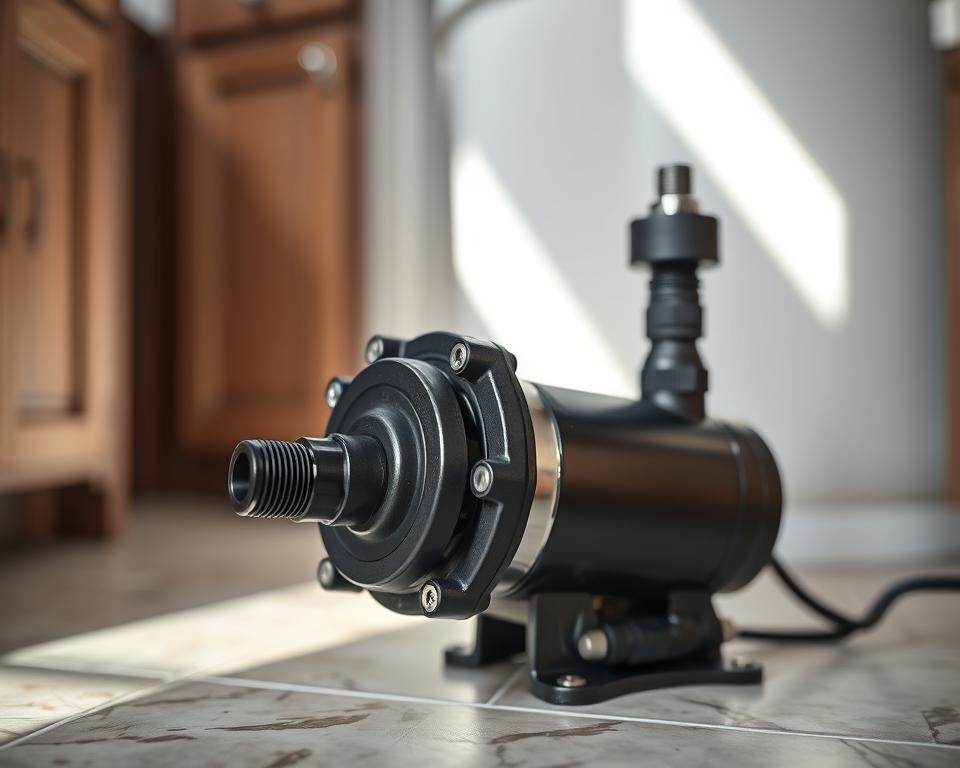Septic Tank Pumping Costs
Have you wondered about the real price of keeping your septic system up to date, or whether you’re spending too much? It’s critical for property owners to comprehend the specifics of septic tank pumping prices. On average, the price tag is roughly $420, though it can vary significantly. This variance results from factors like your tank’s capacity and your location – septic tank cleaning near me.
Scheduled maintenance of your septic tank avoids hefty fixes, highlighting the necessity of understanding service costs. Our goal is to explore septic tank service pricing thoroughly. This will enable smart budgeting financially for your system’s care.
Core Lessons
- Average septic tank pumping runs about $420.
- Prices can sit between $290 and $560 depending on various conditions.
- Regular servicing heads off more expensive repairs in the future.
- Most households call for pumping every 3 to 5 years.
- Family size and use can impact pumping frequency.
Recognizing the Importance of Septic Tank Pumping
Septic tank pumping is crucial for a efficient effluent system. It removes solids that, if left unchecked, create clogs. Consistent pumping doesn’t just stops bad smells but also sidesteps steep repair costs.
Neglecting septic tank maintenance can compromise our extensive reliance on these systems. Fortunately, reasonably priced services lower the risk of system failure. Routine upkeep lengthens your septic system’s life, helping maintain smooth operation.
Cost data for septic tank upkeep teaches the value of proactive care. Maintenance detects problems at an initial stage, dodging major damage and hefty repair bills. Regular pumping is a wise move for homeowners to protect their asset and ensure peace of mind.
Average Costs for Septic Tank Pumping
Septic tank pumping generally falls between $250 and $600 USD in cost. Most times, homeowners will spend about $400 for this essential service. Fee differences are due to factors like tank size, where you live, and how often service is scheduled. Standard tanks, around a thousand gallons, usually cost between $225 and $400 USD.
Homeowners should recognize the importance of allocating funds every 3 to 5 years for septic tank cleaning. This scheduled care depends on the tank’s usage and size. It avoids larger, pricier issues later, proving to be both labor and money‑efficient.

Factors Influencing Septic Tank Pumping Prices
A number of factors are crucial in establishing the cost of septic tank pumping. Grasping these details empowers homeowners to plan for these required services properly.
The volume counts greatly. Larger tanks demand more effort and resources to empty, which means increased fees. The ease of access to your tank also greatly affects the price. Tanks installed deeply or in difficult locations demand more labor and special tools from technicians, thus hiking the labor costs.
Costs can differ widely depending on where you live. This is due to shifts in local labor rates and disposal fees. For example, some areas have higher charges for disposing of waste, influencing the overall service cost. Moreover, tanks with heavy solid waste accumulation also attract additional fees—anywhere from $100 to $300. Plus, the more frequently a tank requires pumping—due to higher household wastewater production—the higher the ongoing expenses.
Septic Tank Capacity and Its Influence on Cost
The size of your septic tank directly impacts the cost of its upkeep. Lower‑capacity tanks, say, those that can hold 750 gallons, tend to have lower pumping costs, usually ranging from $175 to $300 USD. On the other hand, larger tanks, capable of holding up to 1,750 gallons, may incur charges between $400 and $700. The majority of single‑family residences use tanks that hold between 1,000 to 1,250 gallons, offering a blend between capacity and function.
Households with smaller tanks or large households often need more frequent pumping services, which raises the overall expense. It’s important to conduct regular septic tank inspections in these situations. This ensures the tank does not overflow or malfunction, which sidesteps additional problems. By recognizing the relationship between tank size and service fees, homeowners can make smart choices regarding their septic systems and their upkeep requirements.
Regional Differences in Septic Tank Pumping Costs
Septic tank pumping costs can differ greatly based on location. In urban areas, the expenses are frequently higher due to local septic services experiencing increased overhead. For example, Minneapolis, MN residents may spend between $180 USD and $280, while those in Portland, OR could see prices from $440 USD to $750.
The reasons behind these differences are many. They include regional expenses, call for septic specialists, and local regulations. In places where septic services are limited, homeowners might pay more due to the fewer choices. Moreover, tough regulations in some regions can push up the need for higher compliance fees, influencing the cost of services.
Being knowledgeable about these geographic cost variances is crucial for homeowners. It allows them to plan their septic maintenance spending more realistically. By understanding local pricing, they can obtain quotes from specialists wisely, maintaining their septic system efficiently without overspending.
Additional Costs to Consider with Septic Tank Pumping
Homeowners often forget about various additional maintenance costs associated with septic tank pumping. The primary cost pays for just the basic service, excluding other potential expenses. Being aware of these can aid in creating a comprehensive budget.
Video line checks, for instance, range between $250 to $500. They offer a non‑invasive look into the system’s condition. Additionally, filter rinsing, which if skipped can lead to system failures, represents another cost.
The range for repairs can be wide, from $100 USD to $4,000 USD, according to the specific issues. This spread emphasizes the need of factoring in additional maintenance costs for future budgeting.
Budgeting for Septic Tank Maintenance
When budgeting for septic tank upkeep, it’s vital to take a comprehensive view. This covers multiple critical elements. Owing to variable factors, the cost of maintenance can shift considerably. Because of this, effective financial planning is essential.
To keep your system runs reliably and to dodge surprise bills, keep these periods and services in mind:
- Routine pumping: This service is typically required every three to five years.
- Inspections: Set aside for around $250 to $1,180 for inspections every three years.
- Potential repairs: Maintain a fund for unexpected fixes, which can arise unexpectedly.
Creating a routine maintenance calendar with a reliable septic service is key. By forecasting these expenses, homeowners can avoid the hefty costs tied to neglect. This approach guarantees the durability and performance of their septic systems.
Common Signs That Your Septic Tank Needs Pumping
Keeping watch to your septic system’s condition is crucial. Spot the first signs that suggest your septic tank is due for pumping. Doing so can avert serious damage and reduce repair costs.
- Slow drains: Water with sluggish flow in sinks, tubs, or toilets could mean your septic tank is too full.
- Unpleasant odors: Bad smells near the septic tank or in your yard are often red flags of a problem.
- Gurgling sounds: Strange gurgling from your plumbing might show air is trapped because of a blockage.
- Wet spots: Puddles or lush grass patches near the drain field suggest waste seepage from the tank.
- Dark green grass: Grass that is deeper green and seems healthier around the drain field may show leakage of nutrients, hinting at an issue.
Regular checks by septic system experts can maintain your tank is in proper order. Hiring seasoned septic technicians for maintenance stops these issues, ensuring your system’s longevity.
Advantages of Routine Septic Tank Inspections
Scheduled inspections are integral to keeping your septic system in prime shape. They spot potential problems before they turn into expensive repairs. By hiring professionals for these checks, every part of your system receives a thorough assessment.
The process examines several parts of your system, including waste levels and the drain field’s state. It verifies that critical parts, like baffles, operate as they should. Spotting issues promptly helps prevent dangerous overflows and protects the environment, aiding both your home and the wider community.
Scheduling your septic tank checked every three years can save you a lot of money. It avoids bigger issues from arising due to neglect. This not only cuts on repair costs but also ensures your peace of mind.
| Inspection Aspect | Importance |
|---|---|
| Waste Level Assessment | Prevents overflow and backups |
| Drain Field Evaluation | Identifies saturation and function |
| Component Functionality Check | Ensures proper system operation |
| Early Problem Detection | Saves on repair costs |
Strategies to Reduce Spending on Septic Tank Pumping Prices
Homeowners looking to reduce septic tank pumping costs have multiple strategic options. Setting up group services with neighbors is one smart method. This involves working together with others nearby to schedule services together, potentially geting group discounts. It’s a way to boost community bonds while trimming expenses more effectively.
Another useful approach is to join maintenance plans with septic service providers. These plans often include reduced rates for routine check‑ups and pumpings, maintaining septic systems operating properly at a lower cost. Homeowners are urged to ask about these plans when contacting service companies.
Making the septic tank easy to reach can also help reduce pumping expenses. Good accessibility means there’s no need for extra labor charges. It’s smart to keep the area around the tank unblocked, permitting straightforward servicing.
Adopting certain habits helps in prolonging the time between pumpings as well. Cutting back on water usage and minimizing garbage disposal use are key practices. These actions can significantly improve septic system health, decreasing the need for regular maintenance. By following these habits, homeowners can successfully reduce their septic tank pumping costs, safeguarding their budgets and systems.
Bringing It All Together
Guaranteeing regular septic tank pumping is crucial for homeowners who want to keep their waste management system sound and efficient. Knowing about the costs involved permits smart budgeting. This way, you can get cost‑effective septic services without hurting your system’s smooth operation.
Adopting a forward‑thinking approach to maintenance is very beneficial. By noticing clues that show the need for pumping, you can dodge expensive repairs and lengthen your system’s lifespan. Such actions not only boost your home’s functionality but also offer you peace of mind.
Ultimately, keeping up with routine inspections and timely septic tank pumping is vital for sound home maintenance. By focusing on proper planning and choosing affordable septic service, you’ll ensure your septic system remains operational and effective for many years.


